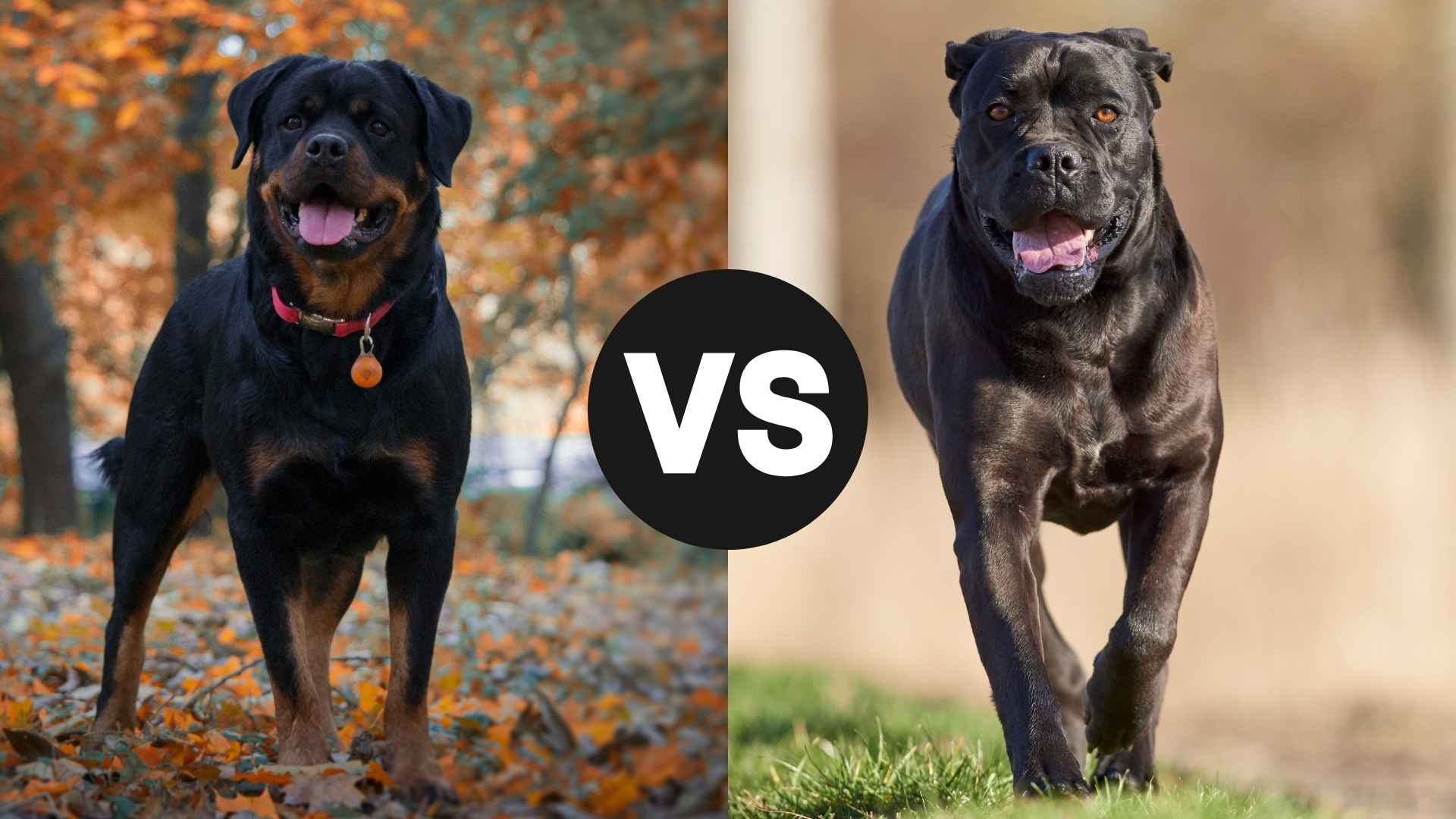According to the American Kennel Club, the Cane Corso’s lineage dates back to ancient Roman times, where they served as fearless protectors and hunters. Similarly, Rottweilers are descendants of the mastiffs that accompanied Roman legions, renowned for their strength and loyalty.
These powerful breeds may look alike, but their personalities are quite different. The Cane Corso is a serious guardian, always on alert, while the Rottweiler is protective but more affectionate. Both need strong leadership and training to thrive.
Choosing between them depends on your lifestyle and experience. The Cane Corso demands firm guidance and space to work, while the Rottweiler blends protection with a playful side. Either way, these dogs are lifelong commitments requiring dedication and care.
Rottweiler vs. Cane Corso
Rottweiler vs. Cane Corso: Comparison of Physical Characteristics
When comparing the physical characteristics of Rottweilers and Cane Corsos, both are large dogs with distinct features. Male Rottweilers typically stand between 24 to 27 inches tall, while females are slightly shorter. Cane Corsos are slightly larger, with males reaching up to 27.5 inches in height.
In terms of weight, Rottweilers range from 80 to 120 pounds, depending on gender and genetics. Cane Corsos are similarly heavy, often weighing over 100 pounds.
Both are robust and muscular breeds, built for strength and endurance. However, the Cane Corso tends to have a more muscular build, giving it a bulkier frame and a more athletic stance. Rottweilers, while powerful, have a slightly stockier appearance with a broader chest.
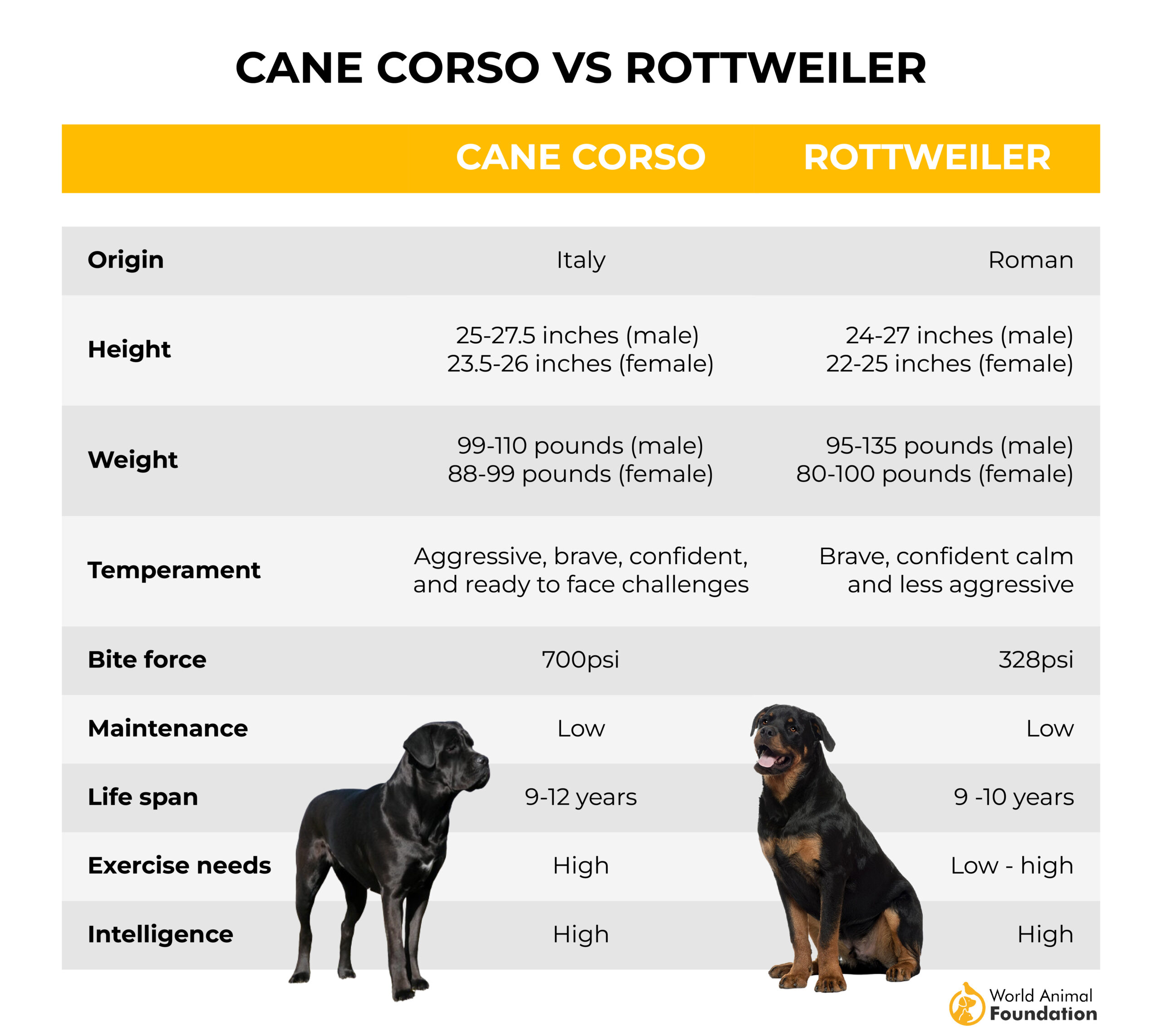
Facially, Rottweilers possess a broad head with a moderately arched forehead and strong jaws. Their medium-sized, pendant ears complement their alert expression. Cane Corsos feature a large head with a broad skull and a square muzzle, enhancing their commanding presence.
The coat of a Rottweiler is short, dense, and straight, predominantly black with rust-colored markings. Pawlicy states that Cane Corsos have a short, stiff coat that can be black, gray, fawn, or red, sometimes with brindle patterns.
Both breeds have strong jaws and healthy teeth, designed for gripping and holding, making them effective guard dogs. Their bite force is impressive, with the Cane Corso exerting over 700 pounds per square inch, slightly higher than the Rottweiler.
In summary, while both Rottweilers and Cane Corsos are large, powerful breeds with some similarities, their subtle differences in size, build, and coat characteristics can influence a potential owner’s choice.
Rottweiler vs. Cane Corso: Health Comparison
Rottweilers often face hip and elbow dysplasia, heart disease, eye problems, and various cancers, including bone cancer. Similarly, Cane Corsos are susceptible to hip dysplasia, bloat (gastric dilatation-volvulus), and idiopathic epilepsy.
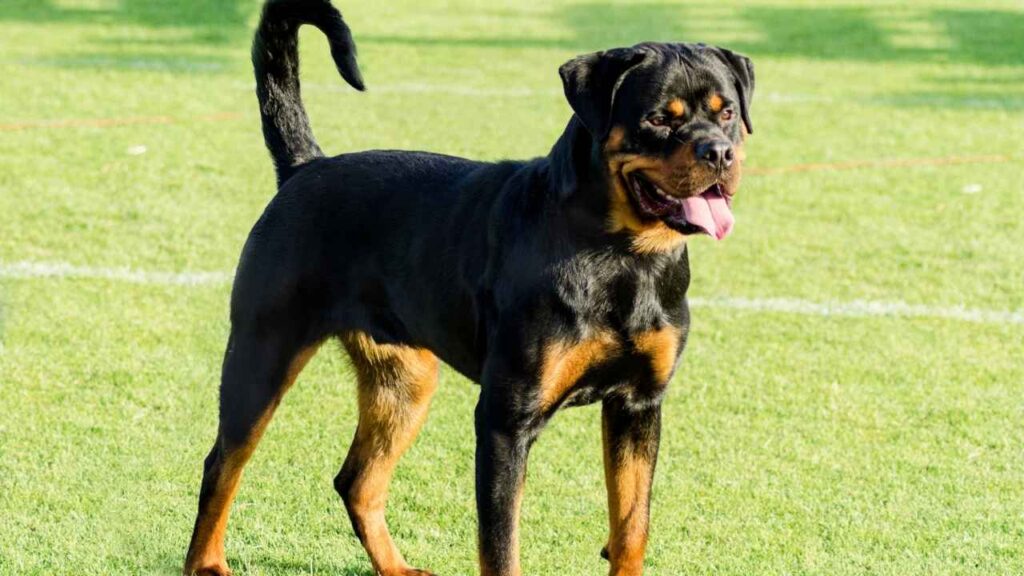
Both breeds are prone to hip dysplasia, a genetic condition where the hip joint doesn’t develop properly, leading to arthritis and pain. Maintaining a healthy weight and providing appropriate exercise can help manage this condition.
PetMD notes that Rottweilers have a higher incidence of certain cancers, such as osteosarcoma (bone cancer). Regular veterinary check-ups are crucial for early detection and treatment.
Cane Corsos are at risk for bloat, a life-threatening condition where the stomach fills with gas and can twist. Feeding them smaller, more frequent meals and avoiding vigorous exercise after eating can help reduce this risk.

Both breeds benefit from regular dental care to prevent periodontal disease. Their short coats require minimal grooming, but routine checks for skin issues are advisable.
Given their size and strength, both breeds are susceptible to accidental injuries, especially during vigorous activities. Proper training and supervision can mitigate these risks.
Both breeds require committed owners who can address their specific health needs. Regular veterinary visits, a balanced diet, and appropriate exercise are vital to ensure their well-being.
Rottweiler vs. Cane Corso: Comparison of Intelligence
Rottweilers are recognized for their confidence and intelligence, traits that have historically made them excellent guard dogs. Similarly, Cane Corsos are highly intelligent and eager to please, making them generally easy to train.
Rottweilers were originally bred as working dogs for herding and guarding livestock, roles that required quick decision-making and adaptability. This background contributes to their ability to learn commands rapidly. Cane Corsos were developed as hunting dogs, necessitating problem-solving skills.

Both large breeds are known for their loyalty and protective nature toward family members. However, their intelligence means they can be wary of strangers, underscoring the importance of early socialization. Rottweilers tend to be more outgoing, while Cane Corsos are often reserved.
In terms of unique traits, Rottweilers are confident and versatile, excelling in various roles from therapy to police work. Cane Corsos are calm and serious, thriving when given specific tasks that engage their intellect.
Training both breeds requires a firm yet positive approach. Their intelligence means they quickly grasp commands, but without consistent guidance, they may develop undesirable behaviors. Engaging them in activities that challenge their minds, such as obedience training or agility courses, can be beneficial.
When considering Cane Corso vs. Rottweiler, it’s essential to match their intelligence and energy levels with the right owner. Experienced handlers who can provide structured environments are ideal. Both breeds can coexist with other pets if properly socialized from a young age
Rottweiler vs. Cane Corso: Training Comparison
Both Rottweilers and Cane Corsos were originally bred for working roles, necessitating structured training to harness their capabilities.
Rottweilers, known for their confidence, respond well to positive reinforcement methods. Incorporating high-value treats and praise can enhance their learning experience.
Cane Corsos benefit from early obedience training to establish boundaries and prevent dominance issues. Daily walks and short engaging sessions using positive reinforcement methods are effective.
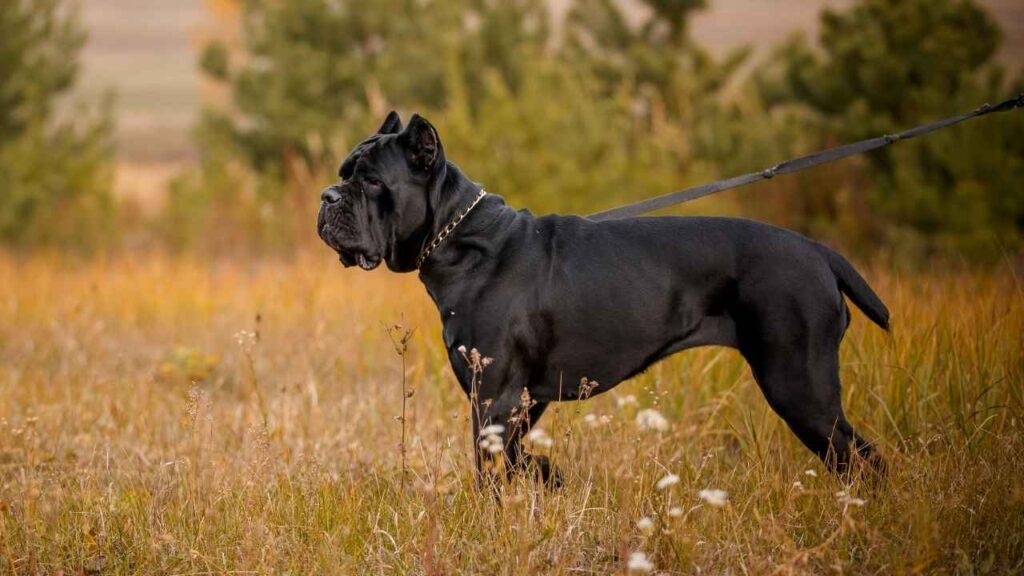
Both breeds require mental stimulation to prevent boredom-induced behaviors. Engaging them in activities like obedience training or agility can be beneficial.
Regular exercise is crucial for these active breeds. Royal Canin mentions that Rottweilers benefit from at least two hours of physical activity daily. Cane Corsos also require ample exercise to maintain their physical and mental health.
Both breeds can be vocal, using barking as a form of communication. Proper training can help manage excessive barking and ensure it aligns with acceptable behavior.
In the Cane Corso vs. Rottweiler training comparison, both breeds require consistent training approaches. With the right training, they can become well-adjusted companions.
Rottweiler vs. Cane Corso: Socialization and Living Environment Comparison
Rottweilers and Cane Corsos are both loyal dogs with distinct socialization needs. When socialized properly, Rottweilers get along well with most people and dogs, though males may show dominance. Cane Corsos tend to be more reserved, bonding closely with their owners.
Early socialization is crucial for both breeds to develop into well-mannered adults. Introducing puppies to various environments, people, and experiences helps them become confident and reduces the likelihood of fear or aggression.
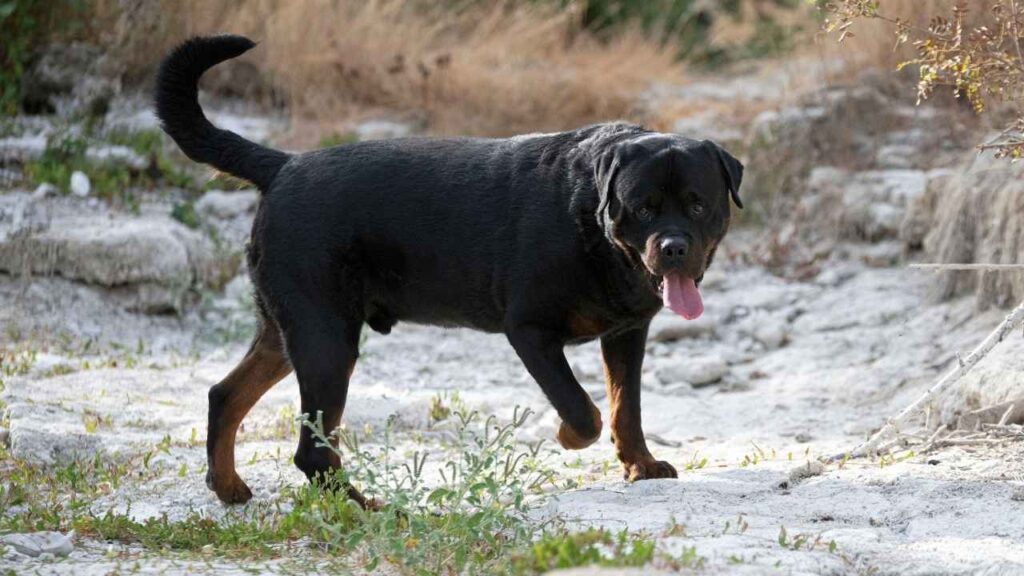
Rottweilers have a confident temperament and need early socialization to recognize real threats. Cane Corsos, while also protective, may be more stubborn and reserved, requiring structured exposure to different scenarios. Proper training helps prevent over-guarding behaviors in both breeds.
Both breeds can coexist with children when properly socialized. However, due to their size and strength, interactions should always be supervised to prevent accidental injuries.
When it comes to living environments, Rottweilers can adapt to apartment living if they receive sufficient exercise and mental stimulation. Cane Corsos, being more reserved, may prefer quieter environments but can also adapt with proper training and socialization.
Both breeds have moderate grooming needs due to their short coats. Regular brushing helps manage shedding and keeps their coats healthy.
In summary, both Rottweilers and Cane Corsos require dedicated socialization and training to thrive in various living environments. With the right approach, they can become well-adjusted companions in active families.

Conclusion
Choosing between a Cane Corso and Rottweiler depends on your lifestyle and experience with big dogs. Both breeds are powerful, loyal, and protective, making them excellent companions for the right owner. However, their personalities and training needs set them apart.
The Cane Corso and Rottweiler share a history as Roman war dogs, bred for guarding and working alongside humans. Their strong instincts and intelligence make them capable protectors, but early socialization and training are crucial to shaping their behavior.
Rottweilers are known for their affectionate nature and can be a great family dog when trained properly. They bond deeply with their owners and enjoy being involved in daily activities, making them well-suited for families that can provide structure and attention.
Cane Corsos, while also loyal, tend to have an independent streak. They need firm leadership and consistent training to ensure they respect boundaries. Their reserved nature means they may be less social than Rottweilers, especially with new people or animals.
Both breeds require at least an hour of daily exercise to stay physically and mentally stimulated. Regular walks, playtime, and training sessions help prevent boredom and destructive behaviors. A fenced yard and space to move are ideal for these active dogs.
When it comes to other pets, Rottweilers may tolerate cats and other animals if introduced properly. Cane Corsos, however, have a stronger prey drive and might require extra supervision around smaller pets. Early exposure and positive reinforcement can improve their adaptability.
If you’re considering bringing one of these incredible breeds into your family, make sure you’re ready for the commitment. Whether you prefer the confident and affectionate Rottweiler or the reserved and powerful Cane Corso, both require time, training, and love.


